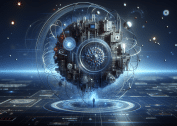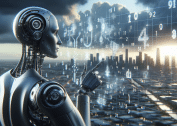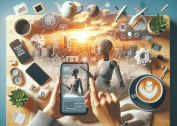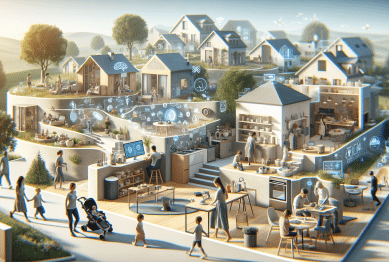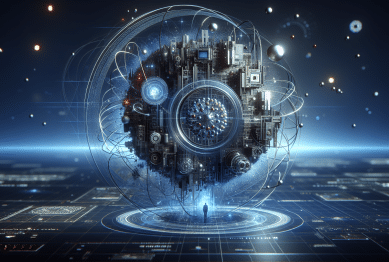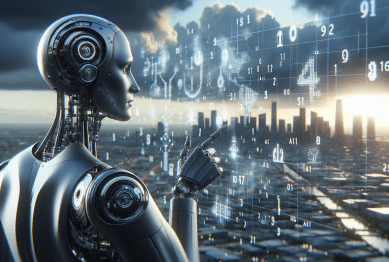Artificial intelligence is quietly reshaping everyday life, from smarter devices at home to groundbreaking medical research. This guide explores the fascinating ways AI influences your routine, offers insights into behind-the-scenes technology, and reveals where the field is heading next.
Discovering Artificial Intelligence Beyond the Hype
Many people hear the term artificial intelligence and picture science fiction robots, but AI technology is increasingly woven into daily routines in ways that often go unnoticed. Voice assistants in smartphones, personalized shopping recommendations, and even the way online maps suggest traffic-free routes are powered by AI algorithms. Natural language processing allows machines to understand human speech, which is why smart speakers and chatbots are getting more intuitive every year. AI doesn’t just exist in far-off research labs; its presence shapes how daily information is filtered and delivered, helping simplify complex tasks for individuals and businesses alike.
The scope of AI in consumer technology is expanding rapidly. Applications ranging from image recognition to predictive analytics are now a part of applications beloved by millions. Algorithms can identify faces in photos, suggest which emails are important, and help tailor entertainment recommendations on streaming platforms. Even seemingly simple features, such as autocorrect or spellchecking in text messages, involve advanced machine learning techniques developed to make digital communication easier and clearer. These practical uses are a testament to how AI quietly backs many everyday conveniences.
One of the most fascinating aspects about artificial intelligence is its capacity for continuous improvement. Every time users interact with certain systems, the AI learns and adapts, becoming smarter over time. The more data it processes, the better it predicts preferences, curates content, and anticipates future needs. This behind-the-scenes learning process is called ‘machine learning’—a core principle of modern AI. It’s a silent partner in daily technology, subtly expanding capabilities every day, whether at work, home, or on the go.
AI and Healthcare: Quiet Innovations Making a Difference
AI is creating powerful tools for healthcare practitioners and patients, transforming how medical data is managed and interpreted. Advanced algorithms analyze medical images at remarkable speeds, helping doctors detect conditions such as tumors and fractures with increasing accuracy. Machine learning is also enhancing electronic health records, which enables physicians to review patient histories more efficiently and identify trends that might lead to earlier interventions. These advances support greater precision and allow for more personalized approaches in treatment recommendations and patient monitoring.
There’s growing interest in AI-powered diagnostics to aid clinicians. Take the example of wearable devices: These gadgets track metrics such as heart rate, sleep patterns, and blood oxygen levels—and with AI’s help, can identify subtle health changes or warn about potential anomalies. Algorithms pore through vast amounts of sensor data, learning what’s typical for each patient and flagging issues that deserve closer examination. This sort of AI-powered monitoring is especially promising for those managing chronic conditions, empowering more proactive and informed care.
Research is another area benefiting from artificial intelligence in healthcare. Data-heavy tasks like drug discovery, gene sequencing, and population health studies are now more manageable, as AI handles vast datasets far faster than human researchers can alone. By finding patterns in thousands or millions of records, AI uncovers insights that drive the next generation of medical breakthroughs. This collaboration between human expertise and machine intelligence promises a future where healthcare is more responsive and attuned to unique individual needs.
How AI Shapes Smarter Homes and Cities
Smart homes powered by AI offer convenience, security, and energy savings, bringing science fiction-like experiences into reality. Intelligent thermostats learn household patterns and optimize heating or cooling schedules for maximum comfort with minimal energy waste. Home security systems using computer vision can distinguish between family members, pets, and unknown visitors, sending alerts only when it matters most. Appliances respond to voice commands, lights adjust based on occupancy, and entire homes can be managed remotely through smartphones — all using AI-driven automation.
At the urban scale, AI is at the heart of smart city initiatives. Algorithms balance power grids, respond to changing traffic demands, and help reduce energy consumption during peak times. Public safety is reinforced through computer vision and analytics that guide emergency responses and optimize resource allocation. AI also underpins the analysis of environmental data, supporting efforts to reduce pollution and track weather-related hazards more effectively. By analyzing real-time and historical information, cities can make better decisions and deliver services more efficiently.
Transportation is an area where artificial intelligence stands out. Smart traffic lights adapt to reduce congestion, and ride-sharing platforms use predictive analytics to assign vehicles and set estimated arrival times. There’s also progress on autonomous vehicles, which rely on deep learning and computer vision to ‘see’ and respond to road conditions. These changes are transforming urban mobility, making daily commutes faster, safer, and more sustainable. The invisible hand of AI, working behind the scenes, is shaping more responsive, livable towns and cities.
Everyday Interactions With AI: What Users Experience
For many people, daily engagement with artificial intelligence often goes unnoticed. Email spam filters, smart search features, and personalized news feeds are just the tip of the iceberg. When searching for products online, recommendation engines use machine learning to offer relevant suggestions. Voice-activated assistants, one of the most visible faces of AI, handle a growing list of commands — from setting reminders to managing smart home devices — and are becoming more adept at interpreting context and following complex requests.
Education is also being transformed by AI. Online course platforms use adaptive systems to personalize learning paths and feedback. Virtual tutors, powered by natural language processing, answer questions, track progress, and even assess written assignments with remarkable speed and accuracy. These capabilities free up valuable time for both teachers and learners, enabling more tailored educational journeys. As digital content becomes more prevalent, AI serves as an indispensable guide in navigating the wealth of information available.
Another dimension involves privacy and ethical considerations. AI-driven personalization means experience is tailored, but it also means more data is being analyzed. Developers address these concerns by working to increase transparency and provide users with more control over their settings. Guidance from regulatory bodies and organizations focused on digital rights help set the standard for ethical AI applications. As users interact with these intelligent systems, discussions about responsibility and trust in technology become ever more prominent.
Challenges and Limitations of Artificial Intelligence
Artificial intelligence presents incredible potential, but it’s not without hurdles. One major concern is bias in AI models — if the data used for training reflects existing social biases, AI may inadvertently reinforce them. Addressing this requires diverse datasets, careful oversight, and constantly updated best practices from the AI research community. Transparency in AI processes is also crucial, giving stakeholders insights into how decisions are made and what factors influence machine learning outcomes.
Another challenge involves data privacy and security. As AI systems rely on large volumes of personal data, keeping information secure and ensuring proper consent are top priorities. Legislation such as the General Data Protection Regulation (GDPR) in Europe is setting stronger safeguards around how data can be used, with clear guidelines for companies deploying AI technologies. Users are now more aware than ever about the trade-off between convenience and privacy, sparking debates on how to balance benefits and risks.
Finally, there are questions surrounding job displacement and workforce adaptation. Automation through AI has the potential to streamline certain tasks but may also shift the nature of some jobs. Retraining and education become essential for equipping workers with the skills necessary for the evolving digital economy. Leading organizations and policymakers are exploring approaches to ensure opportunities for reskilling and fair labor transitions. The future of work in an AI-infused world will likely depend on collaboration between humans and intelligent systems.
Surprising Advances on the AI Horizon
The pace of innovation in artificial intelligence is remarkable, with researchers experimenting in areas such as creative design, quantum computing, and collaborative problem-solving. Generative models are making headlines for their ability to compose music, write articles, and even create digital artwork. These breakthroughs challenge old assumptions about what machines can do and inspire new forms of human-machine collaboration. AI is now a partner in not just analytical tasks, but also the creative process itself.
Quantum computing, still in its early stages, promises to accelerate AI by unlocking processing speeds far beyond traditional computers. Scientists are examining how quantum-enhanced machine learning could solve complex challenges in materials science, physics, and biology. If realized, this union may drive innovations previously considered impossible, fueling advances that ripple through science, technology, and beyond. The horizon for AI’s capabilities keeps expanding, often outpacing what was imaginable even a few years ago.
Finally, AI is amplifying efforts to tackle society’s biggest challenges. For instance, predicting weather patterns with greater accuracy, modeling the impacts of climate change, and managing global supply chains amid unexpected events — these are all areas where artificial intelligence can make a deep impact. As researchers and developers refine systems, the goal is clear: to use AI not just for convenience and efficiency, but for positive, transformational change that benefits all.
References
1. European Commission. (n.d.). Artificial Intelligence. Retrieved from https://digital-strategy.ec.europa.eu/en/policies/artificial-intelligence
2. Mayo Clinic. (n.d.). Artificial intelligence in health care. Retrieved from https://www.mayoclinic.org/artificial-intelligence-in-health-care
3. U.S. Department of Energy. (n.d.). Artificial Intelligence and Machine Learning Research. Retrieved from https://www.energy.gov/science/doe-explainers/artificial-intelligence-and-machine-learning-research
4. Brookings Institution. (n.d.). What is artificial intelligence? Retrieved from https://www.brookings.edu/articles/what-is-artificial-intelligence/
5. World Economic Forum. (n.d.). AI in healthcare. Retrieved from https://www.weforum.org/agenda/2020/03/how-ai-is-changing-healthcare-in-the-covid-19-pandemic/
6. Massachusetts Institute of Technology. (n.d.). The future of artificial intelligence. Retrieved from https://news.mit.edu/topic/artificial-intelligence2



